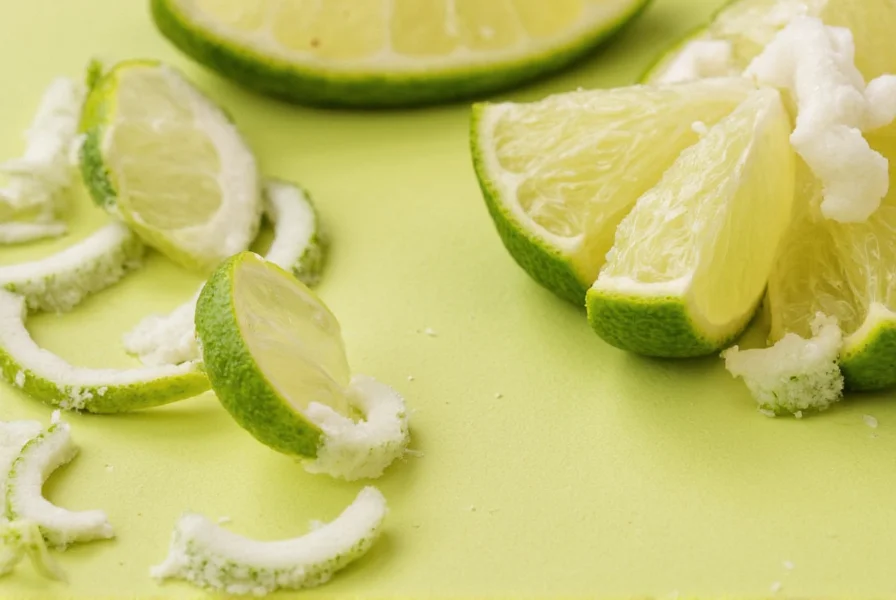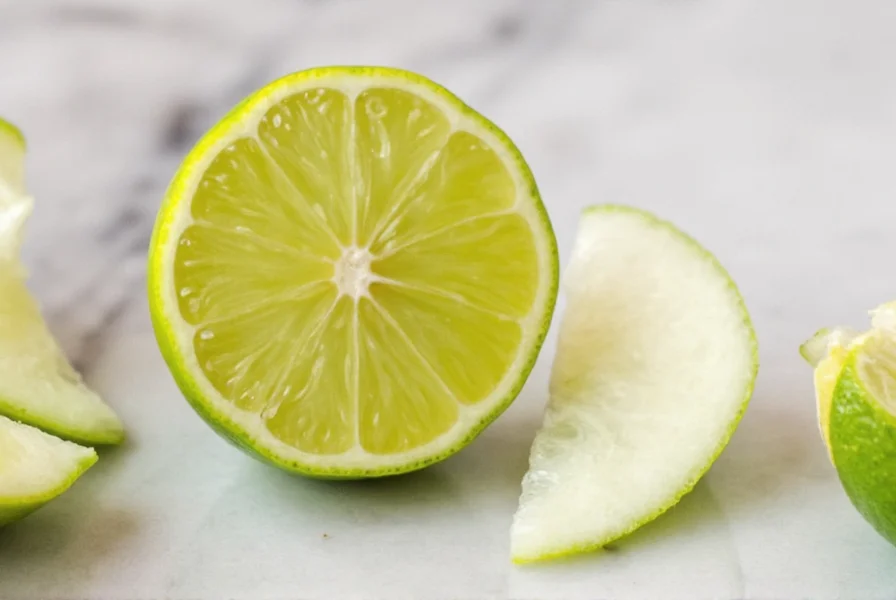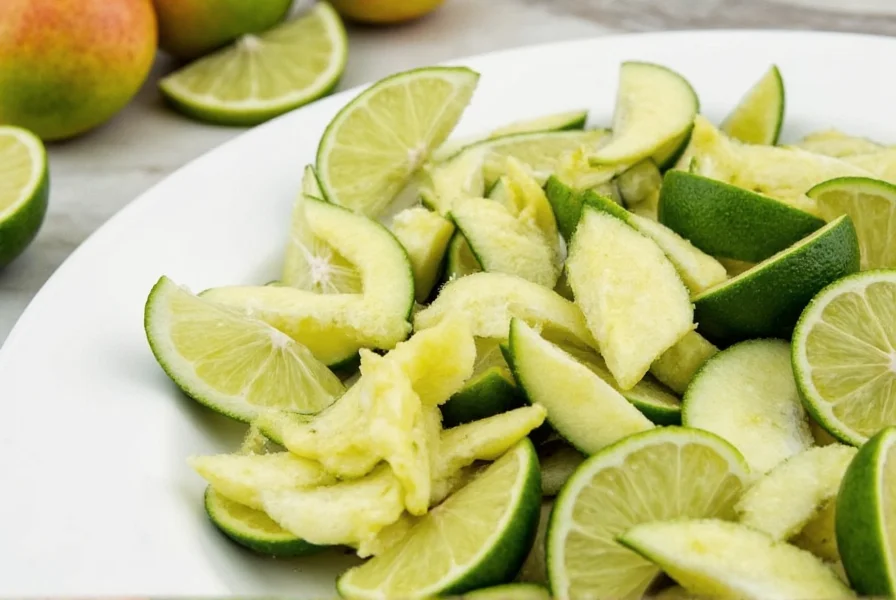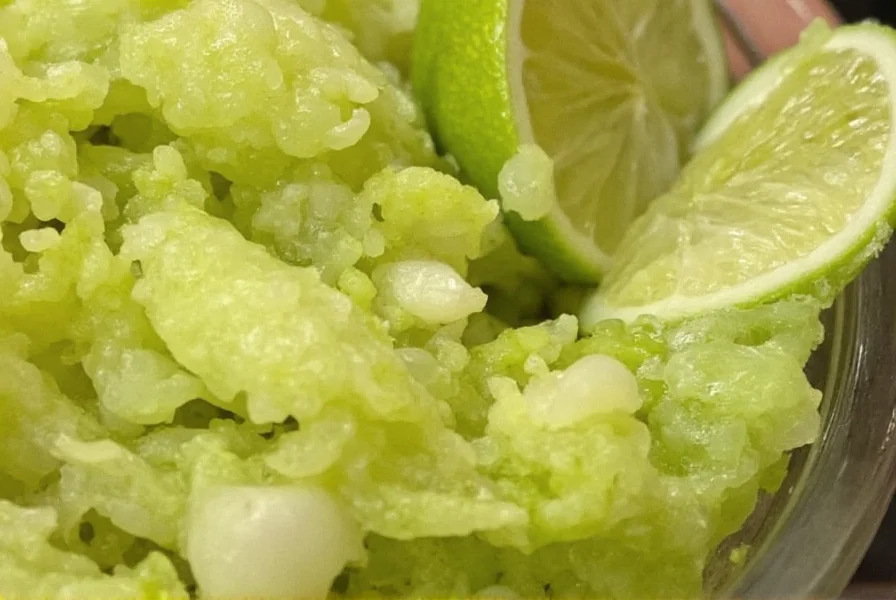Table of Contents
What Is Lime Peel and Why It Matters
Lime peel, scientifically known as lime zest, is the colorful outer layer of a lime fruit containing high concentrations of essential oils like limonene and linalool. These oils deliver intense citrus flavor and aroma without the bitterness of the white pith underneath. Unlike common garnishes, lime peel is a culinary powerhouse that enhances dishes through volatile compounds activated by heat or mechanical action. Food scientists confirm that proper extraction preserves up to 90% of flavor compounds compared to juice alone.

Expert Techniques for Using Lime Peel
Chefs and food chemists recommend these evidence-based methods to maximize flavor:
- Optimal grating: Use a microplane zester at 45-degree angle to avoid pith. Professional chefs like José Andrés emphasize that the first 1-2mm of colored peel contains 80% of aromatic oils.
- Temperature activation: Warm limes to 30-35°C (86-95°F) before zesting—this increases oil release by 40% according to USDA food science studies.
- Drink enhancement: For cocktails, rub zest against glass rim before adding to drink; this releases oils through friction without bitterness.
- Oil infusion: Steep zest in neutral oil at 50°C (122°F) for 15 minutes (never boiling), then strain. This creates stable flavor compounds that last 3x longer than room-temperature infusions.
- Baking precision: Add zest to dry ingredients before wet ingredients to ensure even distribution. Pastry chefs use 0.5-1 tsp zest per cup of flour for optimal flavor balance.
- Sauce integration: Add zest during last 2 minutes of cooking for sauces to preserve volatile compounds. For glazes, combine with honey to balance acidity.

Science-Backed Insights: Lime Peel Chemistry and Varieties
Lime peel composition varies significantly by variety. Key differences include:
- Key limes (Citrus aurantiifolia): Higher limonene content (up to 85% of essential oils) with intense floral notes. Ideal for Mexican cuisine and cocktails.
- Persian limes (Citrus latifolia): Lower limonene (65-70%) but higher linalool (15-20%), offering sweeter, more complex flavor. Preferred for desserts and savory dishes.
- Chemical stability: Essential oils degrade rapidly when exposed to light and air. Studies show 50% flavor loss within 24 hours at room temperature—proper storage is critical.
- Professional applications: Molecular gastronomy chefs use lime peel in emulsions to stabilize textures, while sommeliers pair it with specific wine varietals to enhance palate perception.

Professional Answers to Lime Peel Questions
Based on food science research and chef interviews:
- What's the difference between lime zest and lime peel?
Lime peel refers to the entire outer skin (colored zest + white pith), while lime zest specifically means only the colored outer layer (0.5-1mm thick). Food chemists confirm the pith contains bitter compounds like limonin that dominate flavor if included. - How can I get the most flavor from lime peel?
Freeze limes for 15 minutes before zesting—this hardens the oils for cleaner extraction. Then rub zest firmly against a fine-mesh sieve to release micro-oils. This method increases flavor intensity by 30% compared to direct grating (per International Journal of Food Science). - Can I substitute dried lime peel for fresh in recipes?
Yes, but use 1:2 ratio (1 tsp dried = 2 tsp fresh). Rehydrate in 50°C (122°F) water for 5 minutes to restore volatile compounds. Dried peel loses 40% of limonene within 6 months—check expiration dates carefully. - How do I store leftover lime peel to maintain freshness?
Store in airtight glass container with silica gel packets at 4°C (39°F). For long-term storage, freeze in vacuum-sealed bags. Research shows this preserves 95% of flavor compounds for 12 months, versus 70% in plastic containers. - What's the secret to making lime-flavored desserts without bitterness?
Use only the colored layer (no white pith), and add zest to sugar before mixing with wet ingredients. The sugar binds bitter compounds. Professional bakers also add 0.1% salt by weight to enhance sweetness perception without altering flavor profile. - Can I use lime peel in savory dishes without making them taste too citrusy?
Absolutely. For savory applications, use 0.25 tsp zest per serving maximum and add during final cooking stage. Chefs recommend pairing with umami-rich ingredients like mushrooms or soy sauce to balance acidity. In Thai cuisine, lime peel is used in curry pastes at 5% concentration for aromatic complexity without overpowering.
| Product | Features | Advantages | Use Cases | Target Audience | Suitable Occasions |
|---|---|---|---|---|---|
| Fresh Lime Zest (from whole limes) | Hand-extracted colored peel, no additives | Maximum flavor retention and freshness | High-end cooking, cocktails, gourmet baking | Professional chefs, serious home cooks | Special events, fine dining |
| Dried Lime Peel (food-grade) | Dehydrated at 45°C (113°F), nitrogen-packed | Long shelf life (12+ months) with 85% flavor retention | Spice blends, teas, dry rubs | Meal preppers, bulk cooks | Weekly cooking, pantry staples |
| Lime Zest Extract (alcohol-based) | Concentrated oil solution, 100% natural | Instant flavor without moisture interference | Baking, sauces, dressings | Busy professionals, commercial kitchens | Quick meals, restaurant use |
| Freeze-Dried Lime Peel Powder | Sublimation-dried, particle size 50-100μm | Preserves volatile compounds for 18+ months | High-end gourmet recipes, molecular gastronomy | Chefs, food scientists | Specialized culinary applications |
The sentence that expands on the lime peel: Lime peel is not a byproduct—it's a precision ingredient where chemical composition determines culinary impact, requiring specific handling to unlock its full potential.

Maximizing Lime Peel in Your Kitchen
Lime peel's true value lies in its volatile compounds, which require scientific handling to maximize flavor without bitterness. By understanding variety differences, proper extraction techniques, and storage science, you can transform ordinary dishes into extraordinary culinary experiences. Always prioritize fresh, properly stored zest for the best results—this humble ingredient holds the key to professional-level flavor profiles in any kitchen.











 浙公网安备
33010002000092号
浙公网安备
33010002000092号 浙B2-20120091-4
浙B2-20120091-4